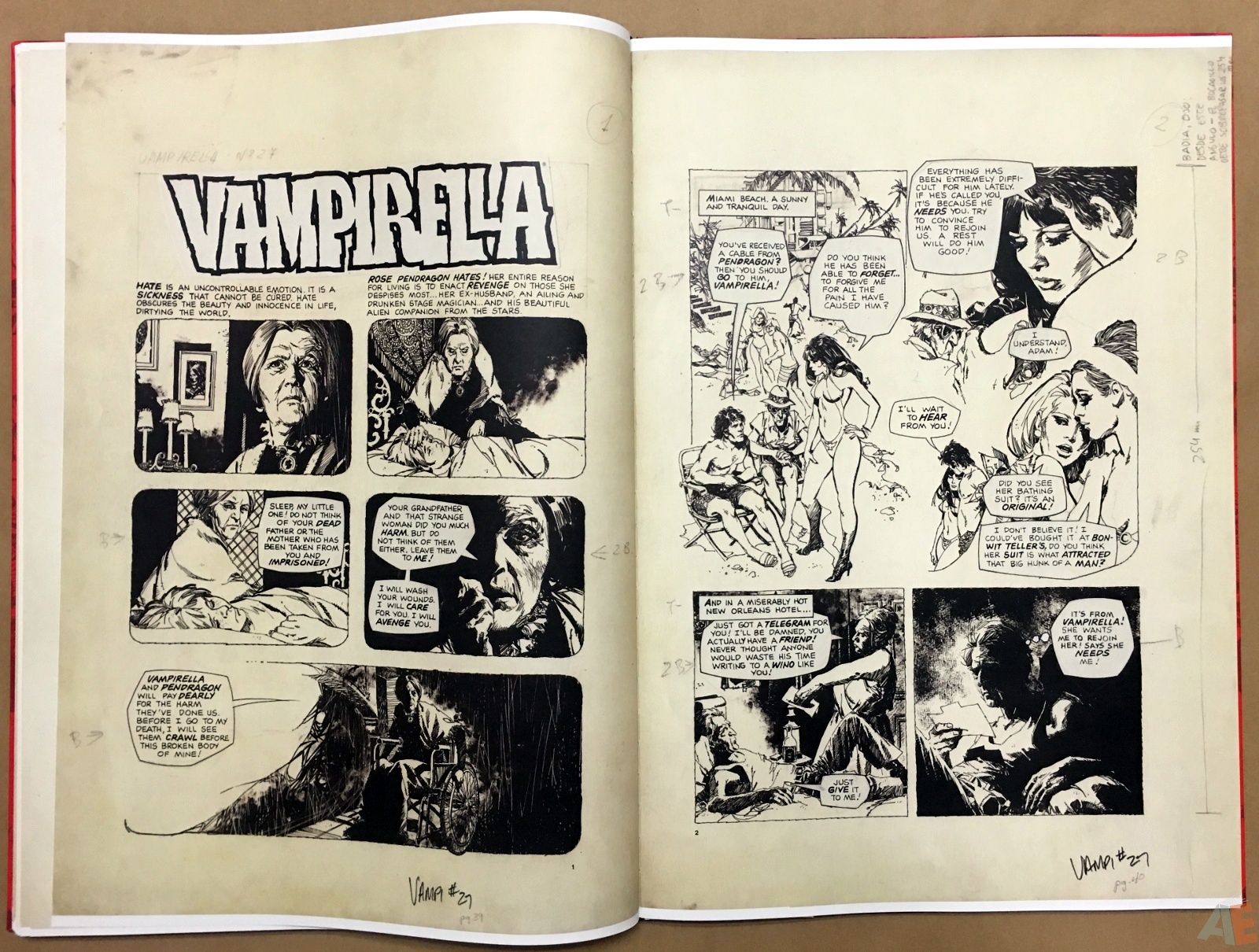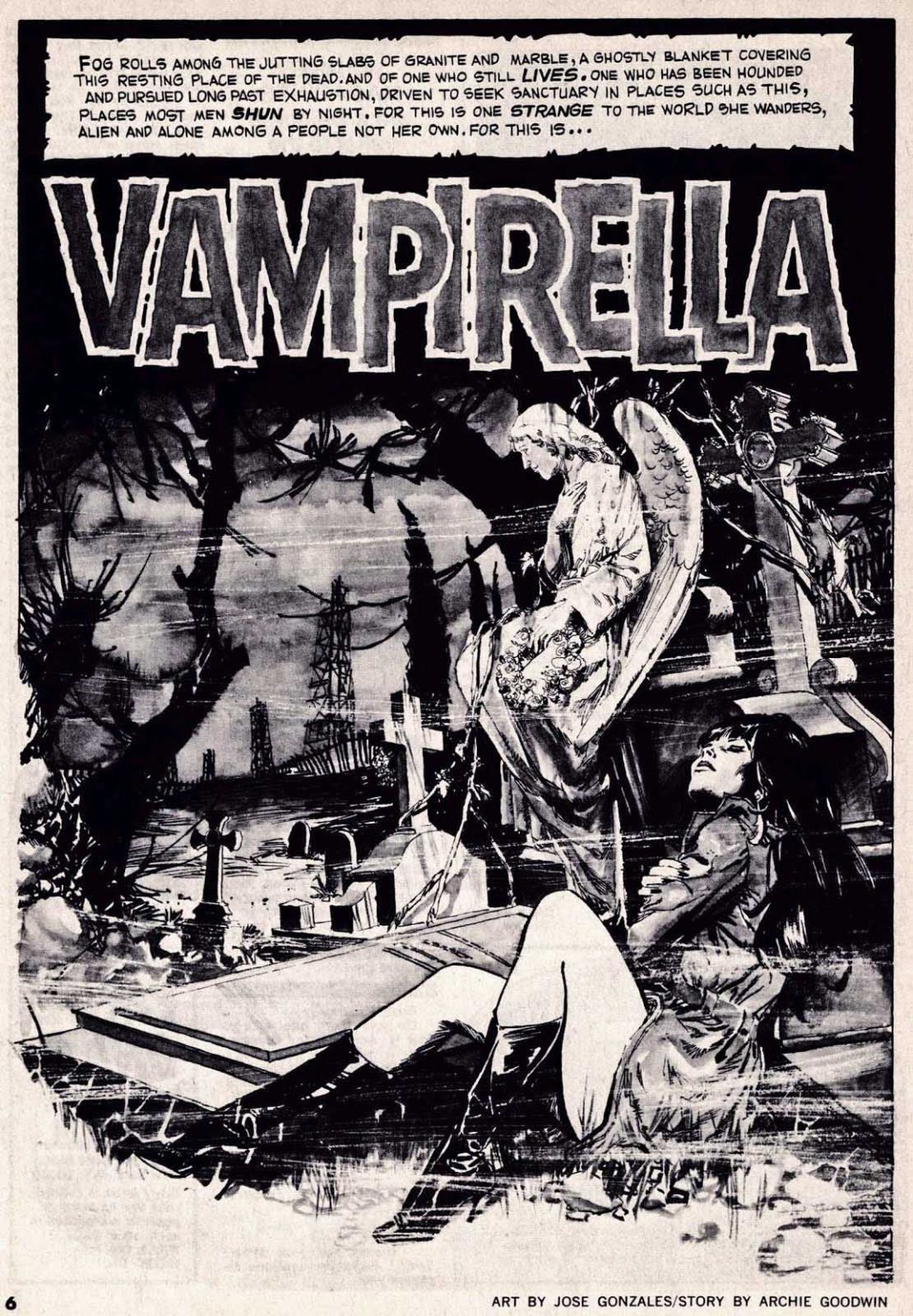I've mentioned my love of the 70's Warren horror comics a few times and posted just a few teaser images. I think it's time to go into some more detail and post some nice eye-watering images. (Eye-watering? Is that even a thing? Sounds painful rather than a visual version of mouth-watering, which is what I was going for, but then that's actually pretty appropriate.) There were many more artists involved in the so-called Spanish Invasion of the late 70s—I'm only presenting the work here of my three favorites. I might show a few more at another time, and I'll definitely show some of the great cover paintings.
"Many American fans then and now, wondered why Warren had opted to have all those Spanish artists. The first answer that came to mind, was that they were actually Mexicans from south of the border who were getting paid minimum wage rates to slave for Warren. But truth of the matter was that Warren actually paid the highest rates at the time, no matter where the artists came from (a practice both DC and Marvel didn't apply to the Filipino artists who were getting a third of what the Americans were paid). Warren's reasoning was quite simple: the Spanish artists were good! But what made these Spanish artists so good? What many people don't know is that most of these guys started working pretty young, mostly in their teens. And as they worked among already seasoned professionals, by the time they reached their early twenties, they were already seasoned professionals as well, something most of their American contemporaries weren't because they had only just started working in the business. You can see this in some of the earlier Warren archive volumes, were the artwork done by some young American artists is quite mediocre by comparison. And even if most of the Spaniards were only in their mid-twenties to early thirties when they started working for Warren, they already had more than a dozen years of experience, which made them seem so much better that their American counterparts."The Spaniards also had a very peculiar way of drawing or inking their comics, that didn't resemble anything done in America at the time. They were also masters of working in black and white, and this was due to the fact that they worked mostly for British magazines that were only printed in B&W. They also got their peculiar style of inking from some Italian magazine of the 60's called Linus. That magazine, which got its name from a Peanuts character, featured the art of two masters of b&w inking and drawing; the Italian Dino Battaglia and the Argentine (though born in Uruguay) Alberto Breccia. Both Breccia and Battaglia had worked for the same editor in Argentina, who also happened to be the best comic book writer of all time: Hector German Oesterheld. Oesterheld got into comic books by accident, and would be among the first writers who would write specifically for an artist (pretty much like Kurtzman and Feldstein would do in EC), and a practice that the Warren writers would also follow. You can imagine the Warren writers fighting to get Maroto or Luis Garcia to draw their stories..."Alberto Breccia, the argentine artist who would inspire so many of the Spanish artists in the late 60's/early 70's, would develop his very peculiar style of inking pretty much through trial and error, and a part of genius as well. Cutting himself one morning while shaving, he pulled the razor blade out and when he was about to leave it on the sink, he noticed it left behind a series of trails pretty much like the lines he obtained while inking with a pen. This gave him the idea to use a razor blade not only to ink, but to scratch the board and so obtain different effects on his inking. This wouldn't go unnoticed among the Spaniards, who began scratching their boards with a razor blade to extreme effects (look at Auraleon's artwork to see what I mean). Breccia's extreme use of shading and shadows, leaving only slits of white on the board to give more depth to his drawings, would also be of a great inspiration to the Spaniards. Most of them discovered Breccia's work either from the same British weeklies they were all working for, or from the afore-mentioned Italian magazine. Frequent Vampirella contributor Fernando Fernandez had also lived for a couple of years in Argentina, and when he came back to Spain, he showed all his friends at SI Artists (the art studio they all worked for in Barcelona), some of the astonishing art he had found in Argentina: artists like Breccia, Jose Luis Salinas (who drew the Cisco Kid newspaper strip, and perhaps the best artist of all time along with Hal Foster), Roume and countless other Argentine artists that would inspire the Spaniards as well."Dino Battaglia, the other source of inspiration for the Spaniards, was an Italian comic book artist who in the early 50's worked for another Italian publisher who had moved to Argentina along with such Italian luminaries as Hugo Pratt and Alberto Ongaro. He used a very peculiar way of inking, working not only in heavy blacks, but with grays he obtained with a "souffle-au-cul", a sort of metal tube divided in two sections; one part went inside the ink pot, and through the other you would blow as through a peashooter. Blowing through one of the metal tubes, would cause the ink to rise through the other tube, thus obtaining an ink splattering on the surface you blew onto. This splattering, similar to what an airbrush does, but much more coarser, and depending on the force with which you blew, would appear almost gray in print. This method of graying was very much appreciated by the Spaniards, who didn't know how Battaglia obtained this effect. However, they soon discovered that by dipping a used toothbrush in ink, and then rubbing the bristles with a ruler onto their art boards, they could obtain a splattering effect. Another trick was using an old sock dipped in ink, and then applying it onto the paper. You would obtain a splatter-like effect as well. As soon as this was discovered, all the Spanish artists were either dipping their toothbrushes, socks, or any clothing with a coarse weaving, into their ink pots and applying/or rubbing them onto their art boards. These effects are used by almost the totality of the Spaniards in the late 60's/early 70's, and you can pretty much see it in all the stories they did for Warren. Add to that some scratching with a razor blade over the splatter you obtained with your socks, toothbrushes, etc., and you've got all the shading needed for a Spanish-like inking for a Warren story."Though inspired by both Battaglia and Breccia, the Spaniards came up with a hybrid-style all their own, which however wouldn't last beyond the decade of the 70's, as nobody works that way anymore."Nevertheless, back in the day, the importance of the Spanish artists didn't go unnoticed among the other artists working for Warren, as many of the non-Spanish artists were trying to emulate them too. You can see this with Paul Neary's work on "Hunter," where he tries to copy Maroto's style, and even with some stories drawn by Tom Sutton. Of special note is also Gonzalo Mayo's work, who many believe is Spanish, but is among the only two Peruvian comic artist to ever make it in America (the other one being Pablo Marcos). Mayo's work is very similar to Esteban Maroto's. And Maroto, whether you like him or not, has left an indelible mark on comic books, with his neo-classic, Mucha-influenced style of drawing."Maroto's series "Dax the warrior", by the way, was meant for Vampirella (see my review for Vampirella Archives volume 5 for further info)."
Vampirella had the chance of finding its most iconic artist as soon as the Spanish artists took over, in the person of Pepe Gonzalez. Gonzalez was an anomaly among comic book artists because he had never wanted to be one in the first place, and as a kid had never read comic books, and only got to do them by a fortuitous accident. Being a very able artist, he was hired at age fifteen to draw comic books by a fresh and newly formed art agency in Barcelona. Like most of the other artists in the studio, they worked for the European, and mostly for the British market, drawing anything from war, spy and western stories for various publishers. It wasn't until Gonzalez, or Pepe, as everyone in the agency called him, was given a western story featuring some can can dancers to draw, that they discovered he could actually draw very beautiful girls. It got to the point where every other artist in the agency would copy Pepe's girls, as he seemed to have the knack to draw them very pretty and appealing. Shortly after, he was given the assignment of drawing romance stories instead for the british market, something he preferred anyway to drawing cowboys. So it wasn't surprising that Pepe was given the chance to draw Vampirella, before any of the other artists from the Barcelona art agency. And this he did extremely well, so much that it's difficult to this day to think of another artist who better defined the look of Vampi.
The problem with Pepe was that he cared very little for comic books, preferring instead to do illustrations in pencil (something he would eventually do for Warren as well, and his pencil drawings of Vampirella are breath-taking). He hardly ever pencilled his pages, the only pencilling he'd do were a series of circles to know where he would place the characters, and then he'd draw the pictures directly with a sharpie. This method however had the drawback of leaving many disproportions in the bodies he drew. Also, for someone who claimed to be a homosexual, he seemed more interested in drawing beautiful girls than men; his male characters rendered quite hastily most of the time, and almost as an afterthought. Pepe also suffered from what's known in the business as being a "lazy artist". He was a really talented person, and not only as an comic book artist, but as a singer, a showman, an immitator, etc. The problem was that he never cared much for anything and didn't really apply himself to his work. Maybe because all this came so natural to him, he never thought of working hard at anything, and just picked the easy way out. Though among his many talents the one he said he could easily desist of, was drawing comic books. Strange, as he made a living from drawing comic books. After his stint on Vampirella, with which he pretty much stuck with until the very end of the company, he would create a couple of other series, always featuring a female lead character. He sadly passed away in 2009, having lived most of his life in the company of his mother and grandmother.
There's one more thing I want to post here, besides a collection of the amazing Warren cover paintings, and that's a brief account of how these mostly Spanish artists came to work for an American company and basically replaced all the American artists who had been illustrating the magazines. I'll dig up the info aand get it ready for when I make that post.

















No comments:
Post a Comment